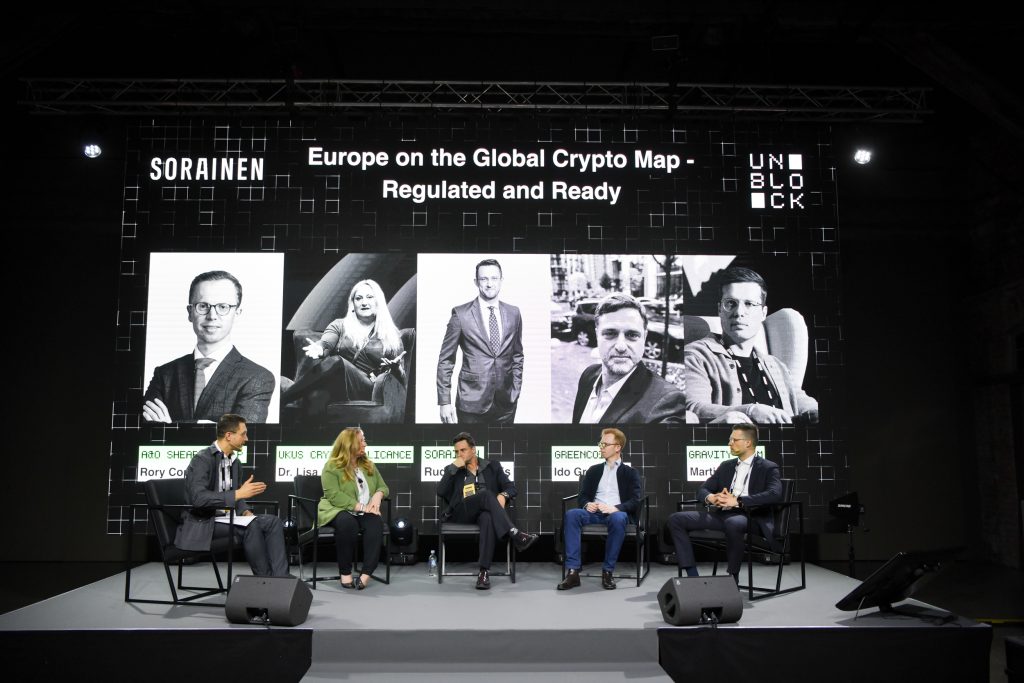MiCA Forces Crypto Darwinism in EU: Weak Projects Face Extinction
The EU’s Markets in Crypto-Assets (MiCA) regulation isn’t just a rulebook—it’s a survival test. By 2025, compliance costs and operational hurdles will decimate the herd of half-baked crypto projects. Expect blood in the algorithmic stablecoin trenches.
Who gets culled? The usual suspects: shady exchanges, vaporware tokens, and ’decentralized’ projects that can’t pass KYC. Meanwhile, TradFi dinosaurs are already lobbying for loopholes—because nothing screams ’innovation’ like regulatory capture.
Final verdict? The EU just turned crypto winter into an ice age for pretenders. Adapt or get zeroed out like a overleveraged DeFi degens.
Compliance or Exit: How MiCA Is Reshaping the Market
Speaking with Cryptonews at the conference,,, said:
In the short term, the market structure in the EU will be affected because smaller players, who cannot afford the cost and time burden of both getting the license and then ensuring ongoing compliance, will exit the EU market.
In the long term, MiCA may deepen global regulatory fragmentation unless major regions align on shared standards:
This risks causing silos or effectively divergent pockets of regulation globally, and crypto trading between these pockets will be impeded unless the key standards are unified.

Clarity, with Conditions
,, told Cryptonews:
For the most part, it sets a solid framework, except when it comes to DAOs, which are still a gray area. Like with many new laws, the real test will be in how it’s applied.
Eņģelis agreed that regulatory expectations are still shifting, creating uncertainty:
New regulatory guidelines appear which are not always in line with what market players have expected.
From Paradigm Shift to Culture Shock
At the same event,,, told Cryptonews:
For players who have been operating without a heavy regulatory framework for years, stepping into the MiCA licensing process means a true paradigm shift.
She explained that compliance now goes far beyond product design or user experience:
Teams need to start looking at all aspects of their business from the perspective of how a classic financial entity WOULD operate, and having internal policies and procedures on not just products. But accounting, business continuity, management of conflicts of interest, highly regulated outsourcing of services from other firms, etc.
Innovation vs. Regulation: A Delicate Balance
When asked whether MiCA will make Europe more attractive for crypto innovation, Rumpa expressed cautious optimism:
The excitement that finally such a key market has clear and comprehensive rules… has already fizzled out, as the private market encounters that the ‘devil is in the details’.
Znotins added:
If the goal is to make Europe a hub for crypto and blockchain, the regulatory approach needs to allow room for smaller players to grow into full compliance, not shut them out from the start.
The Hardest Part? Operational Transformation
,, told Cryptonews:
The greatest challenge lies in the cultural and operational shift required to function in a fully regulated environment.
Rumpa noted:
It is still not clear what is the full list of documents that an applicant for a MiCA license needs to prepare.
Where in Europe Is MiCA Working Best?
Multiple experts pointed to Latvia as one of the most crypto-friendly jurisdictions in the EU. Znotins highlighted:
Latvia stands out as one of the most attractive options. Companies can potentially get licensed in as little as 3 to 5 months.
Puke, who is closely involved with the Latvian Blockchain Association, added:
I’ve seen firsthand the political will to make Latvia a crypto hub.
Other jurisdictions, such as Poland and Belgium, have yet to fully empower their regulatory bodies under MiCA. This delay could cost them.
MiCA offers the structure and credibility the European crypto market has long lacked. But it also brings a steep learning curve. As smaller firms exit or adapt, the industry will consolidate around those who can meet the bar. If regulators balance enforcement with support, MiCA could help turn the EU into a global crypto powerhouse. Without that balance, innovation may look for a home elsewhere.

